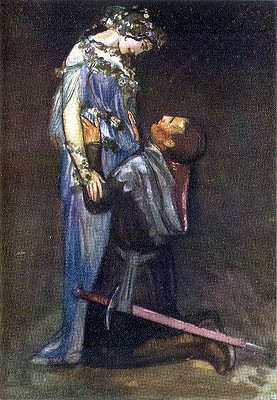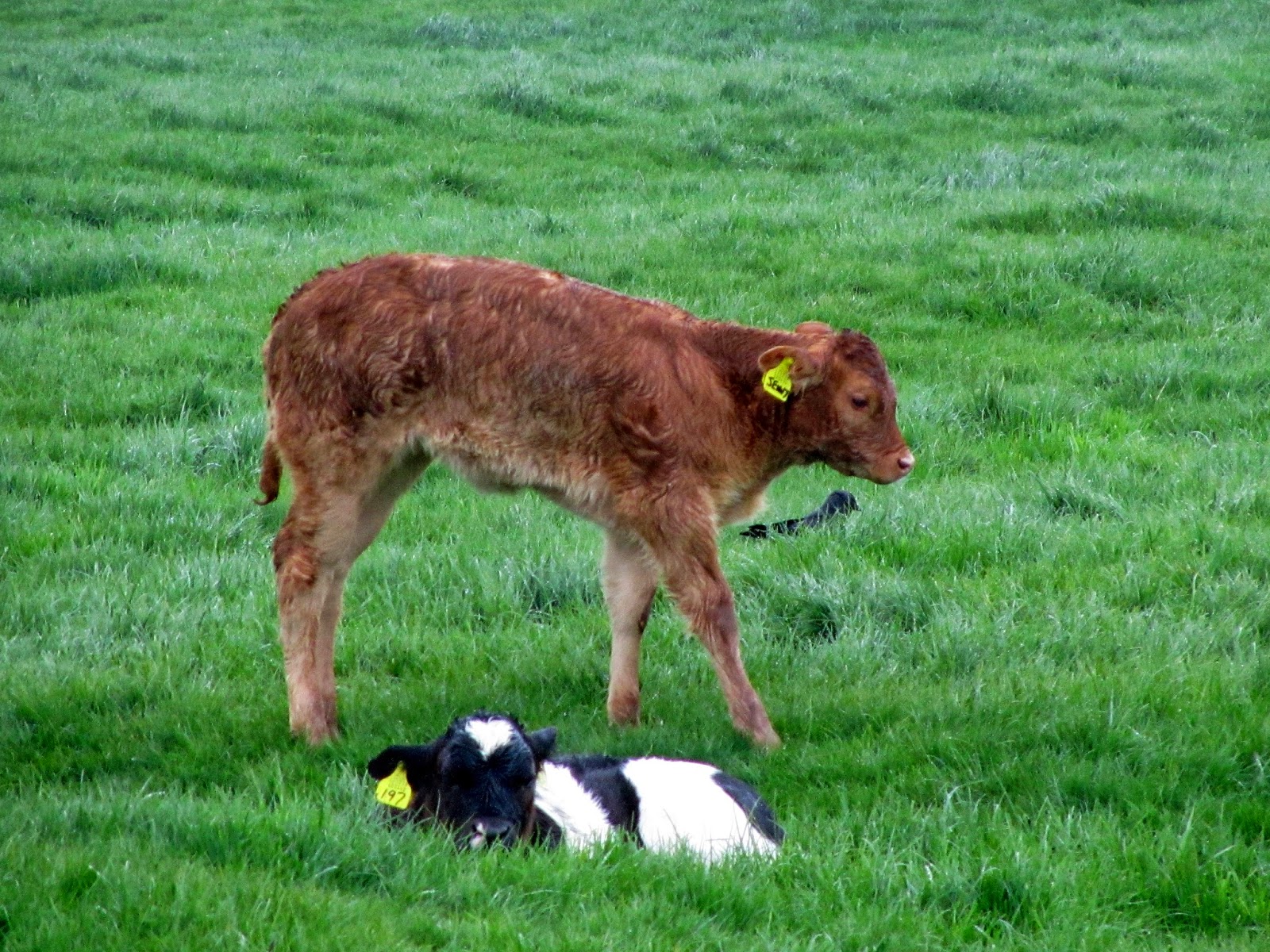BELTANE (from Bealtaine, "bright fire") is celebrated on 30th April/1st May, about halfway between the Spring and Summer Equinoxes. It is a fire festival, as of course are all the Quarter Days. Like Imbolc, at its historic roots it is a festival of a pastoral, herding people. It marks the beginning of summer and the point at which the cattle are released from their winter byres and fields out into the summer pastures further afield, because finally there is enough grass for them all.
Celtic tradition centered around the lighting of bonfires to banish the long winter nights, which the livestock were driven between in order to gain protection from the blights and dangers, both natural and supernatural, of the summer months to come.
Inevitably, a festival at this time of year in the northern hemisphere must celebrate returning light and warmth, new growth, fertility/birth and - therefore - the feminine. In Catholicism, the whole of the month is devoted to Mary as the "Queen of May," honouring her with crowns and displays of flowers. Not surprisingly this is because of older pagan associations with queenly goddess-figures, which needed to be usurped and negated with a good clean dose of Christianity. Before Christ, the Roman festival of the Goddess Flora was held right at the end of April and had a notably sexual character, including the very active participation of prostitutes.
 |
| Spring, by Lawrence Alma-Tadema (1894) |
Now is the month of maying,(ballad from 1595)
When merry lads are playing, Fa la la la la la la la la,
Fa la la la la la lah.
Each with his bonny lass
Upon the greeny grass.
Fa la la, etc...
The Spring, clad all in gladness,
Doth laugh at Winter's sadness,
Fa la la, etc...
And to the bagpipe's sound
The nymphs tread out their ground.
Fa la la, etc...
Fie then! why sit we musing,
Youth's sweet delight refusing?
Fa la la, etc...
Say, dainty nymphs, and speak,
Shall we play barley-break?
Fa la la etc...
Going a-Maying was a tradition where young people (particularly unwed ones) would head off into the woods very early on May Morning to, ahem, gather flowers. These garlands and branches and "may bushes" were brought back to fill the public places of the community ... though never brought indoors. I've talked about the may/hawthorn blossom thing before, with it's chemical associations with sex and death (it's the trimethylamine, man), so I'll just leave the link there for those interested.
 |
| John Collier (1850-1934): Queen Guinevere's Maying |
Modern pagans count Beltane as the day the youthful God and Goddess get to have sex for the first time in the year. Interestingly, in folk tradition May - the month associated with wooing - is extremely unlucky for actual weddings ... perhaps because of the buried memory of all that orgiastic gadding-about, perhaps because of the Jewish mourning period of Omer that tends to fall at the same time, which forbade marriage.
Married when the year is new, he'll be loving, kind and true.
When February birds do mate, you neither wed nor dread your fate.
If you wed when March winds blow, joy and sorrow both you'll know.
Marry in April when you can, Joy for Maiden and for Man.
Marry in the month of May, and you'll surely rue the day.
Another strand of powerful and somewhat threatening femininity was the association of May Day (and the may/hawthorn tree) with the Fairy Queen (a degraded goddess figure), as you were in danger of meeting her if you hung out near a hawthorn on May Day, and perhaps being abducted by her for many years.
 |
| Robert Anning Bell (1863-1933) |
Since the publication of Dracula in 1897 a parallel Germanic tradition has become more well-known in the English-speaking world - that of Walpurgisnacht (St Walpurga's Eve) or Hexennacht on April 30th. Walpurga was an English missionary to the pagan Germans back in the 8th century, and a pioneering female writer, but her feast day is best remembered as the time when witches ride across the land and meet up to do evil. Again, a reminder of terrifying and highly sexualised supernatural women.
 |
| Jusepe de Ribera (1591 – 1652); Procession to a Witches' Sabbath |
;-)












































